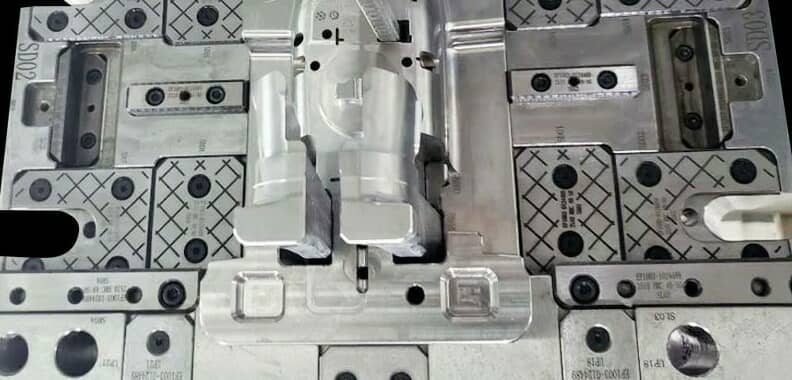thin wall mould and disposable thin wall moulds manufacturer in China
Thin wall container mold
We manufacture thin wall mould, among other products.
Our company is producing a series of thin-wall moulds based on experience and knowledge. These moulds include
- spoon, fork and knife mould,
- thin-walled container mould,
- fast food box mould,
- thin wall bowl mould and
- other disposable thin wall moulds.
Nowadays, plastic containers are widely used in various applications, including food storage, snacks, oil packaging, and so on, from small to large, and can be found from 100 milliliters to 20 liters in size.
https://res.cloudinary.com/dl8a9jvpa/video/upload/v1526610295/20547399_1869774216607468_3555276217122816000_n_2_znux1k.mp4
-
How to run thin wall injection molding
According to industry standards, thin wall parts using engineering resins have a wall thickness between 0.5mm and 1mm and a volumetric flow length to wall thickness ratio exceeding 75.
Amorphous resins, such as polycarbonate, challenge this definition, especially when used as engineering composites. Because a thinner wall section dissipates heat rapidly during injection, it changes processing, tool design, and part design rules. For this reason, the fill pressure will be up to 15,000-35,000 psi (100-240 MPa) and the fill time will be up to 0.75 seconds.
As a result of high fill pressures applied for short periods, mold equipment has to be capable of
- Pumps of high torque and accumulators are required for injection and clamping. The clamp force can be 4-6 tons/inch2 under fill pressures of 30,000 psi (200 MPa).
- High-precision sensors used to control hydraulic systems.
- Powerful machines whose platens are thick enough to prevent deflections to as little as 0.0005" (0.013mm).
- The shot capacity can be limited to 40-70% by using a smaller barrel.
Tooling is affected by high pressure in the following ways
- The number of support pillars and the thickness of the plate(s) must be increased to prevent tool deflection.
- There needs to be more research on cavity-core shifting. The core may need to be interlocked to prevent shifting.
- Ventilation needs to be increased. Vaccum vents may facilitate faster fill speeds.
- In addition to numerous large gates, a melt-feed system that provides a high flow rate promotes easier filling.
- A hotrunner system is almost essential.
- Hardened tool steel of the highest quality must be used.
- To facilitate part ejection, ejector pins should have a large and numerous diameter (2x normal). Part ejection will be improved with low friction coatings.
- It is important that the entire tool has an equal thermal expansion.
-
Steel for thin wall mold
For thin-walled moulds, The steel material should also be considered carefully.
We recommend at least 718 steel for thin wall mould making about 800 thousand.
If a mirror finish is required, H-13(DIN 1.2344) steel will be recommended.
The plastic mould life will be 1-3 million, and the product's surface will also keep the same finish.
P20 steel is widely used for normal mould making, but the mold must be made very strong because of the higher pressure of thin-walled injection moulding.
H-13(DIN 1.2344) and other hard steels add an extra safety factor to thin wall moulds.
However, the H13 thin wall mould cost may be higher than that of the standard mould by 30%-40%.
The increased cost is usually offset by increased production performance.
On the other hand, we will install a beryllium copper insert at the top of the core, with a depth of about 40mm, which can ensure better cooling to shorten the cycle time and allow customers to produce more products as quickly as possible.
In terms of the cooling system, we have our own ideas.
The diameter of the cooling channel and waterway layouts could assure the thin wall mould has the best cooling effect. Therefore, the thin-wall mould we made is of good quality, short cycle time, and fast delivery time.
If you want to make high-quality thin-walled moulds, look for China's mould suppliers, Topworks plastic mold company will be your best choice.
You can get not only the quality thin-wall mould but also to get the best service.
-
Why thin wall mold get popular recently
One of the determining factors for the success of thin-walled injection molding is its speed.
By applying high pressure and fast filling into the mould cavity, molten thermoplastic can be injected into the cavity at high speed, preventing the gate from cooling and solidifying.
A complete injection moulding cycle can be completed in two seconds if the wall thickness can be reduced by 25%. This allows the filling time to be reduced by 50% within one second, thereby reducing the cycle time by one second.
With a thin-walled injection, there is less material to be cooled because the wall thickness is reduced.
The moulding cycle can be drastically reduced as the wall thickness decreases.
In a reasonable setting, neither the hot runner nor the runner system will interfere with the shortening of the moulding cycle.
Molding cycles are shortened to a minimum with the use of hot runners.
" order_by="sortorder" order_direction="ASC" returns="included" maximum_entity_count="500"]
https://www.plasticmoulds.net/thin-wall-container-mould

Comments
Post a Comment